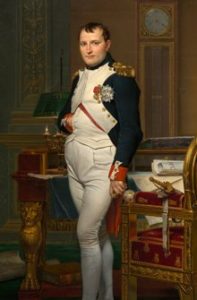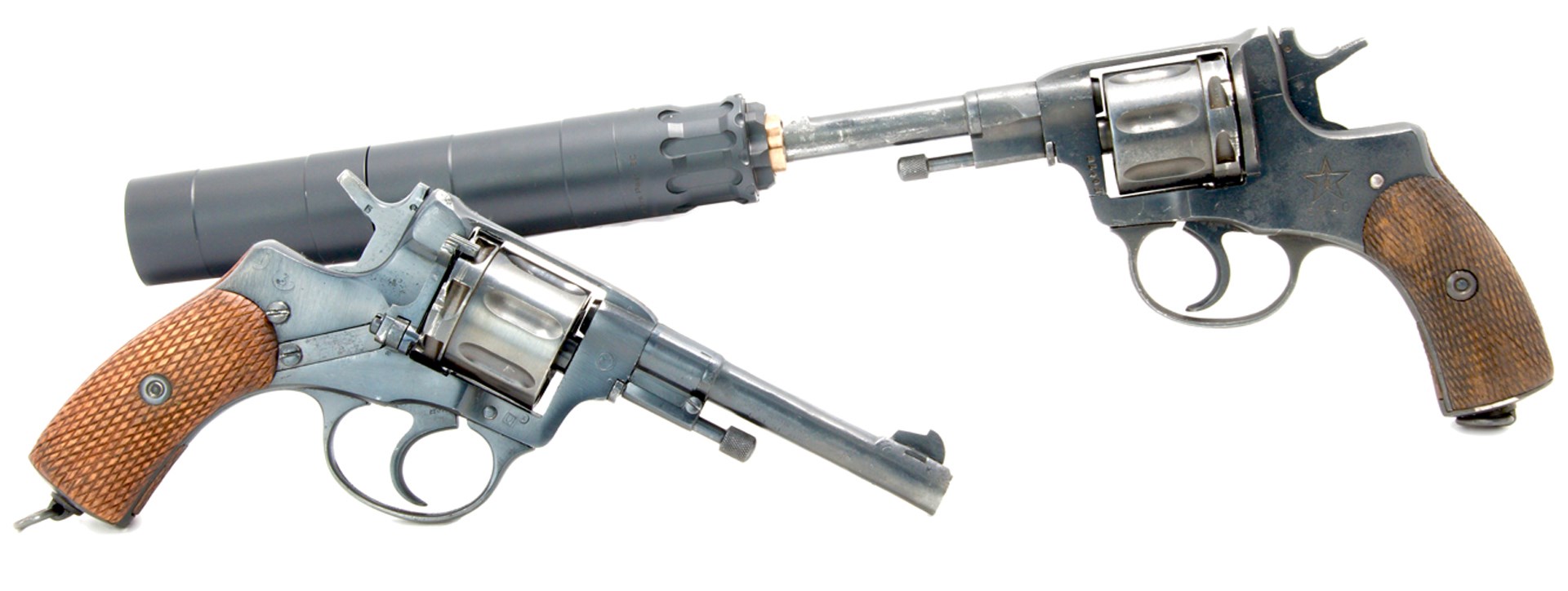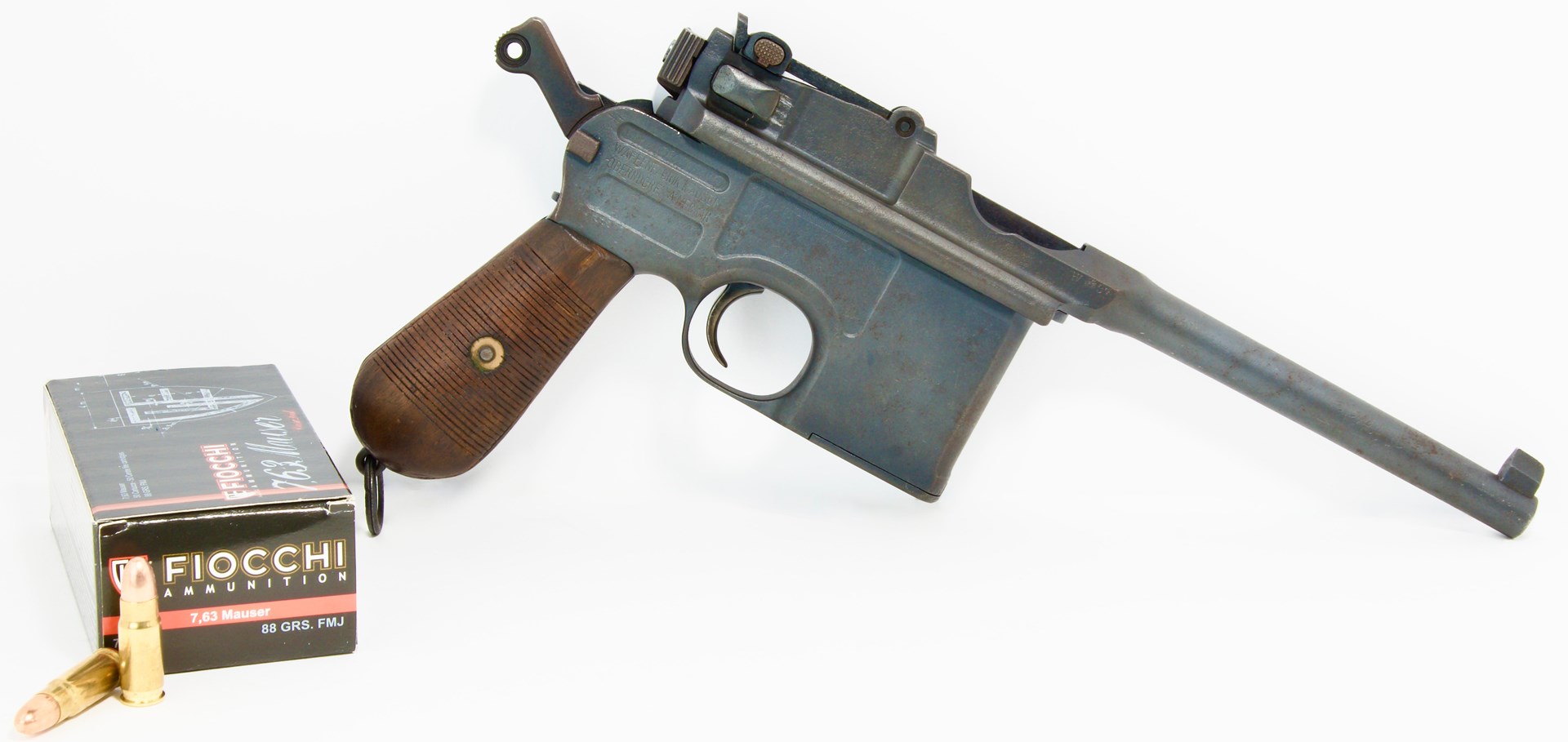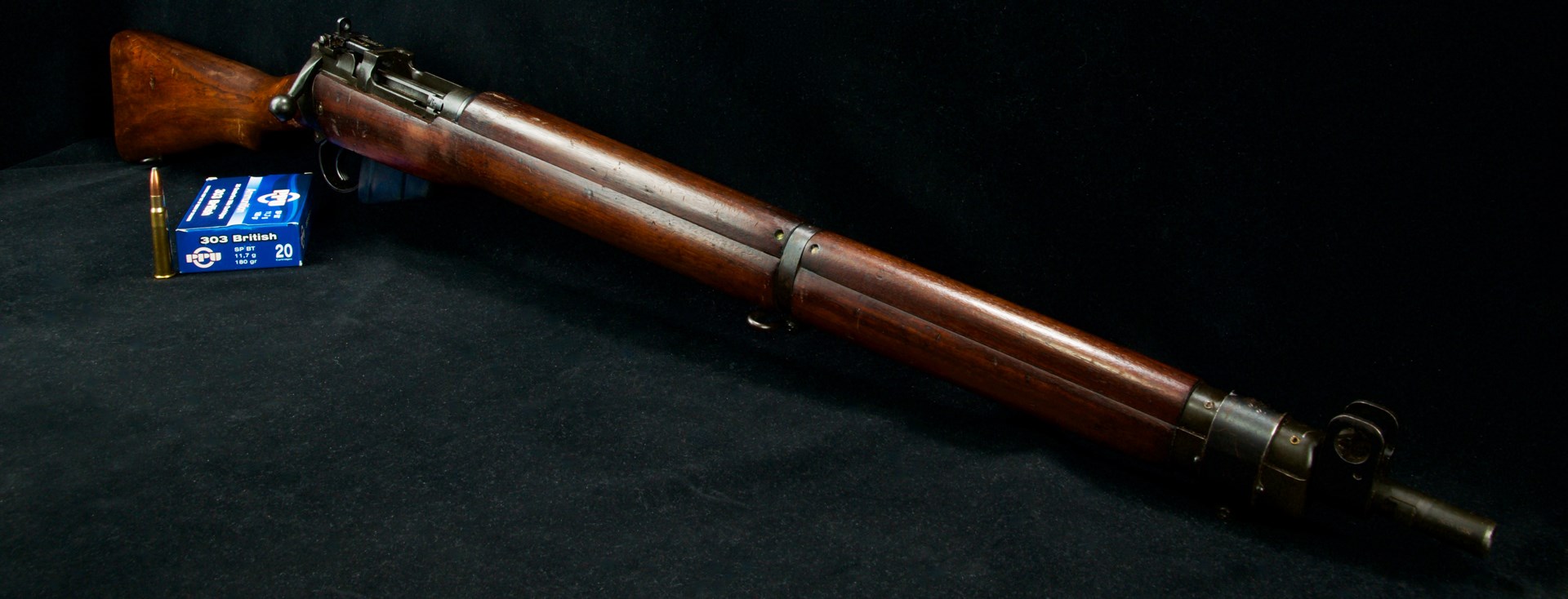Month: February 2024
 How much do you want to bet that they went from the shop straight to the Museum? Grumpy
How much do you want to bet that they went from the shop straight to the Museum? Grumpy
Napoleon & His Marshals
Napoleon the Greatest?
My opinion, yes he is. I know others might say Julius Caesar or Alexander, but Napoleon fought across 3 continents in many climates against a variety of foes. He was engaged in at least 70 battles over his career, winning 59 of them, with only 11 battles resulting in a loss or draw. This means he was victorious 84% of the time. He also won many of his battles with inferior numbers to his enemy. This demonstrates he possessed superior tactical ability versus the generals of the opposing army. Napoleon was so successful, there was 10-year period from 1799 to 1809 where he didn’t losE a single battle. Indeed, most of his losses occurred during the end of his empire from 1812-1814 when he was low on troops and supplies.

Although he was a voracious reader of books and military history, he never really cared about what previous generals had done in similar battles. He went to a battlefield, did a few equations of probability in his head and knew where to position his troops and to attack the enemy troops.
But overall, I believe he remade warfare to achieve his goals. His maxims and strategies are still studied at military schools around the world to this very day. If you are still unsure if he was the greatest, here’s a list of opposing generals Napoleon defeated.
Mind you – all these men had a plan for victory, gave Napoleon their best shot……and lost. Argenteau, Provera, Beaulieu (defeated twice), Knorr, Wurmser (3 different times), Davidovich (twice), Alvintzy (twice), Wintzingerode, Murad Bey, Abdallah Bey, Mustafa Pasha, Melas, Mack, Kutuzov (twice), Hohenlohe, Kamensky, Benningsen, San Juan, Hiller, Konovnitsyn, de Tolly, Schwarzenberg, Wrede, Wittgenstein, Olsufiev, Sacken, Yorck, and lastly Blucher (5x) and Archduke Charles (6x).
Was he short?
This is a common myth, Napoleon was actually 5’7” or 5’6” which was about average for a Frenchman of the time. The British listed him as 5’2” and often depicted him as tiny in the press and cartoon caricatures. In addition, the British referred to him as “Little Boney” and even some French troops called him “le petit corporal”. But the latter statement was more of a term of endearment.
Early in the Italian campaign, General Bonaparte would usually site his cannon batteries – a job usually reserved for corporals. He also surrounded himself with his Imperial Guard at all times on the battlefield. The height requirement to be in this elite personal guard was 6’0”. The imperial guard uniform included a bearskin cap which was a little over a foot tall. So anyone would look smaller when standing next to a group of these hulking men.
Was Napoleon a Genius?
This is a tough question. My answer is I don’t know, although he was highly intelligent. In today’s society, only 1% of the population tests at the genius level on IQ tests. Quick sidebar – please ignore any IQ estimates of Napoleon that you might find on the internet. The first modern IQ test wasn’t developed until 1904, almost 90 years after Napoleon’s death. My opinion is that he was always the hardest-working person in any room. Growing up as he did, competing against his siblings first, and then his well-to-do military school classmates instilled an incredible work ethic within him.
He came to a France as a nobody from the small newly acquired territory of Corsica. He always wanted to be the man in charge and he was a risk taker. He could work without sleep for several days straight, sometimes sitting on horseback for 20 hours a day and even eating his meals there. He understood the military maxim, “get there the first-est with the most-est” as he hurriedly pressed his troops to march hundreds of miles to run circles around their opponents. But he also incurred many failures in life, he had a tumultuous first marriage with Josephine. His siblings were of constant displeasure to him.
His Imperial Navy efforts were disasters as was his Continental System economic plan. And despite all warnings from his subordinates, he initiated 2 invasions that would bring down his empire. Spain and Portugal in 1807 and Russia in 1812. After tremendous losses in both endeavors, he had many opportunities to make peace with the rest of Europe. He spurned those olive branches and this led to his eventual downfall. I believe that a battlefield was simple to him, much like music was to Beethoven or Mozart when they sat down at a piano.
What were the backgrounds of Napoleon’s marshals?
Napoleon’s “sacred few” marshals were from diverse backgrounds. Some were former nobles from King Louis XVI’s reign, while others were sons of commoners who worked their way up through the ranks. An attractive feature of the French army after the French Revolution was the opportunity to advance in rank based on merit. This was a radical idea at the time. In most pre-Revolution royal armies in Europe, officers were only allowed to come from nobility. The highest rank a commoner could achieve was a non-commissioned officer such as a sergeant or warrant officer.

Marshal Ney, Bravest of the Brave
Ney was the son of barrel-maker, Oudinot was the son of brewer. Lannes and Mortier were the sons of farmers. Bernadotte, Soult, Moncey, and Brune were sons of lawyers. Murat, possibly the most famous of all the marshals, was the son of an innkeeper. Only 5 of the 26 marshals originated from military families – Serurier, Davout, MacDonald, Marmont, and Victor.
There was an adage at the time that stated every soldier in Napoleon’s army carried a baton in his backpack, meaning that the highest rank was available to anyone who worked hard enough. I believe the marshals and the Grand Armee was successful because, for the first time, the soldiers were promoted on merit instead of privilege. When a rising officer was lobbied by Napoleon’s staff to become a general, Napoleon usually asked a simple question – is he lucky?
Sounds ridiculous but Napoleon really did believe in luck and he also believed that the harder you work, the luckier you are. He was fortunate to have a large assortment of lucky, hard-working generals.
What were the rewards and dangers of being a marshal?
The rank of marshal in France is highest honor a person can receive during war-time. Its tradition goes back to the 1200’s. During Napoleon’s reign, each marshal or the “Big Hats” as they were called by the rank and file, received a baton decorated in blue velvet and adorned with a Latin inscription that translates to “Terror in war, ornament in peace”. Each marshal also received financial endowments, estates, dukedoms and kingdoms from Napoleon. Berthier received the most cash, $1.2 million francs per year. Ney received an average of $1 million francs per year and Davout received the 3rd most with $910,000 francs per year.
The marshals were essentially viceroys for the Emperor. As much as he tried, Napoleon could not be everywhere at once. All marshals were expected to lead from the front and it was a dangerous position. Most of the marshals were wounded in battle, with Oudinot being the most frequent recipient with over 35 battle scars. All were amazingly fearless even for that era of honor and bravery. Only 4 of the 26 – Massena, Brune, Moncey, and Kellerman not wounded in battle at all. On the other hand, 3 of the marshals were killed as a result of wounds suffered in battle.
Were Napoleon’s Marshals effective without him?
This is another common myth that Napoleon’s troops were only effective when he was on the battlefield. After diving into and analyzing the battle numbers, this is a falsehood. For the purpose of this podcast, I analyzed the won-lost record of every battle fought by Napoleon’s army from 1793-1815. Winning a battle is hard thing to define, as even winning armies can take huge casualties. For our purposes, we will count winning as controlling the battlefield after the battle was over or the taking of a castle or fixed position after a siege is over. We will qualify losing a battle as retreating or losing control of a castle or fixed position.
When it comes to this metric, most of Napoleon’s marshals had a winning battle record on their own – meaning without Napoleon in the immediate area. Some had very impressive won-loss records like Lannes, Bernadotte, Murat, and Davout (of whom it was said never lost a battle). Others like Soult and MacDonald had more losses than victories, but were still trusted by Napoleon with important tasks and objectives.
A final point is the question of whether Napoleon would have been as successful without these brilliant men – arguably, the greatest collection of military talent in history. I can’t think of any other group of generals that have so much research about them. You don’t often find books about the generals of Alexander the Great, Charlemagne, Genghis Khan, or Frederick the Great. These generals were the celebrities of the age and they won battles with Napoleon and without Napoleon.
Steyr Hahn Variants
The Mosin-Nagant M91/30
The Mosin-Nagant has been a popular gateway into military surplus firearms collecting for many years. The Mosin is a sturdy workhorse. It is a bolt-action rifle of Russian origin. The rifle has gone through several well-known iterations and variants, which played their roles with Russian troops in both world wars. It was used in countless other conflicts around the world and, unbelievably, is still being fielded by a handful of warfighters and militants to this day. This is all to say that the Mosin-Nagant has a fascinating history.

While not nearly as cheap as they were back when folks could buy them by the crate for less than the cost of a new cellphone, Mosin-Nagants have managed to stay well below the price of contemporary offerings. Online prices for all military surplus rifles are generally above average, but Mosins can be found for between $300 and $500. There are certainly cheaper military surplus firearms, like the Carcano M91, but for collectors who want to shoot, ammo availability must be a consideration. Like many others, Carcano ammo has, unfortunately, mostly dried up for the time being. The 7.62×54 mm R round chambered by the Mosin-Nagant has certainly risen in price, but it’s nowhere near to the extent of something like Carcano ammo. It also remains available to buy off the shelves of many local gun stores and large outdoor retailers.
When shooting, the recoil on the Mosin-Nagant is stout, and the muzzle report is hearty. Recoil is not so bad that it should keep a collector from enjoying the experience, but if that does happen to be the case, many companies produce rubber padding for the Mosin that can be slipped around the butt of the gun to reduce felt recoil. The Mosin is as easy to clean as it is to operate. The simplicity of the rifle is part of its charm. Between being easy to find, easy to shoot and easy to keep clean, the Mosin is a great introductory choice into military surplus.
The Swedish Mauser M1896
The Swedish Mauser Model of 1896 is a step up from the price of the Mosin. With this increase in price comes an increase in the quality of firearm being purchased. The Swedish Mausers are known for their excellent fit and finish. Even those like the one pictured, which has taken many dings and dents, maintain an undeniable aesthetic quality. The Swedish M1896, also known as the M96, is said to be one of the most accurate military surplus rifles ever imported. This makes it an obvious choice for new collectors who want a top-notch shooting experience with their first military surplus rifle. The Swedish Mausers have an intriguing history of their own, which I recommend new collectors look into, regardless of their choice of first purchase.

The M96 chambers the 6.5×55 mm (Swedish) cartridge. Excellent ballistic performance and minimal recoil are both hallmarks of this round, and it happens to be a somewhat popular hunting cartridge here in the United States. This means that several manufacturers are producing ammunition for the M96, which a collector should be able to find at many local gun stores and large retailers. The performance of a well-preserved M96 with quality ammunition is great, even by today’s standards. The high build quality of the M96 paired with its ballistic performance make it an ideal choice for new collectors who want to squeeze the best possible accuracy results out of their surplus firearm at the range.
The Nagant M1898 Revolver
When searching for a military surplus pistol with which to begin a collection, the Nagant M1898 is a solid choice. Much like the Mosin, it has a storied past in service to Russia through two world wars. It has been used in a variety of other conflicts over the years. The Nagant pistol is mechanically unique, but does share many traits with other revolvers of the late 1800s. It is also relatively easy to fieldstrip for cleaning.

The M1898 is chambered in the 7.62×38 mm R (Nagant) cartridge. This peculiar cartridge features a rebated bullet with a case mouth that extends beyond the projectile’s tip. Working in conjunction with a forward-moving cylinder that forms a gas seal with the barrel’s forcing cone when firing, the extended case means that there is little in the way of gas or particles to bother the shooter. This gas seal was designed to increase velocity but also notably allows the revolver to be suppressed effectively. The ammunition is not necessarily “readily available” at the local level, but it can easily be found online at about 50 cents a round, as of this writing. This price reflects factory-loaded, non-corrosive ammo. Buying surplus packages of corrosive ammunition will mean lower prices yet. A collector just has to be sure that they know how corrosive ammo affects their firearm and to clean it accordingly. The gun itself produces very little recoil and is quite a pleasant plinker, aside from its heavy trigger. Nagant revolvers are rising in price but can still be purchased for around $500 online, with some local stores selling them for less. The M1898 is a great way to start up a collection, especially if the collector wants to focus on handguns.
Three Military Surplus Arms To Avoid, Or Save For Later
The Mauser C96
The Mauser C96 is a pistol with an incredible history. It was used in myriad conflicts around the world, including both world wars. Known affectionately as “The Broomhandle” due to the layout of its grip, it has been featured popular media. It was famously modified to create an iconic blaster in the Star Wars franchise. The C96 can be a really great firearm to own and shoot, but that isn’t always the case. While a new collector might be attracted to such an iconic firearm, the C96 may not be the right way to get into military surplus firearms if the collector actually wants to shoot.

While the C96 was a well-made pistol that held a good reputation when it was introduced, the years have not been kind to many examples on the market. With the value of C96s rising steadily, buying one without being able to fire it is a risky maneuver. An all-matching C96 in good shape can fetch thousands of dollars. There are so many little things that can go wrong in the many moving parts of the C96, and not many good quality replacement parts are available. Even with the parts, troubleshooting the C96 can be a long and arduous process, even for a more seasoned collector.
This is an issue with many surplus firearms, both popular and obscure. Assessing the rarity of important components is a crucial step of a surplus firearm purchase. Understanding the hurdles you might face, should the gun need repairs, will likely save you money and heartache in the long run. Every year that passes, parts for the majority of military surplus firearms become harder to find. Breakages and repairs are constant, so the demand will always be there. The C96 pictured has had hours of work and troubleshooting done and still has not returned to functioning condition. If a collector plans to bring their military surplus selection to the range, a gun like the C96 should not be a first purchase, unless the buyer is positive it functions. Even then, they should proceed with caution.
The Arisaka Rifles
Japanese firearms are some of the most interesting used in the Second World War. Portrayals in popular media like HBO’s “The Pacific,” have increased the appreciation many prospective collectors have for these firearms, especially the Arisaka rifles. The Arisaka rifles have appreciated greatly in value in recent years, with the Type 99 variant currently selling online for between $450 and $1,000 based on condition and variant. However, price is not currently the barrier to entry for the Arisaka rifles. Ammunition, both for the 6.5 mm and 7.7 mm variants of Arisaka, has become extremely scarce. Reloading components exist for the rounds, but many new collectors will not have the means to reload ammunition, much less the obsolete cartridges required to fire many military surplus firearms. Prices fluctuate, but 20 round boxes of factory manufactured 7.7 Japanese routinely sell for $3 a shot or more, when they can even be found. Very few, if any manufacturers produce cartridges for the Arisaka rifles at this time, so shooting them has become increasingly difficult for those who don’t have the means to reload.

This is not only an issue with Arisakas, but with a host of other military surplus firearms. Certain rounds that were once available on the shelves of gun stores now rarely make an appearance, even in the online market. Buying the needed tools and components to reload opens up a lot of doors for military surplus shooters. For those who can’t load their own ammunition, it’s imperative to research and consider the current availability of ammo for a surplus firearm before taking it home. While an Arisaka rifle makes an excellent addition to a collection and is a joy to shoot at the range, the difficulty in acquiring ammo for many new collectors is a sign that they should steer clear unless they can produce the ammo themselves.
The Lee-Enfield Rifles
Lee-Enfield-pattern rifles are excellent military surplus firearms to add to a collection. They have a storied history of service with our allies in the United Kingdom. Many who are familiar with the Enfield rifles may be surprised to find them on this side of the lists. This surprise is not undue, as the No. 4 Mk I is a favorite among many military surplus collectors, and for good reason. It shoots very well, it cycles quickly and the .303 British round in which it’s chambered is still relatively available for purchase, at least online.
For new collectors however, the current market of Enfield rifles can be very difficult to navigate. First and foremost, Enfields were used in a wide array of applications over the course of their service lives. Information about its service can be deduced through the examination of its markings, as with most any surplus arm. The various markings and symbols represent things like the country the rifle served, inspection information, when it was issued and whether or not it remained under military ownership after that service. That’s just to name a few. Without knowing what the symbols mean, a collector could find themselves overpaying for something that isn’t quite what they wanted. For the multitude of markings that appear on Enfields, there are also things a potential buyer has to look out for, that may not be quite so obvious.

Some Enfield rifles, like several other military surplus arms, were built or rebuilt for the purpose of training soldiers. These are referred to as drill purpose rifles. Drill purpose rifles were not built to the appropriate specifications to handle live fire with full-power ammunition. The weakened construction of drill purpose Enfield rifles means that attempting to fire a live round out of them could be an injurious or even fatal venture. In the vast majority of cases, research will supply a collector with the tools to identify drill purpose rifles. Problems arise when it comes to drill purpose rifles that can’t be easily identified upon inspection. Some Enfield rifles that have been pieced together from parts can possibly contain components of dubious quality or questionable origin. This however, is a pitfall of many different military surplus platforms, not just the Enfields. Headspace can also present a possible issue in all military surplus firearms, including the Enfield rifles. Having a headspace gauge and understanding how it works could help you to pick the right rifle when making a purchase. Some Enfield rifles, like the one pictured can be fitted with “numbered bolts.” There are a number of helpful resources on the internet to learn about how they work, but in essence they can possibly be used to adjust the headspace of an Enfield rifle.
The Enfield is truly a great firearm and having one in a collection is a very rewarding experience. It’s not that the rifle itself is bad to own or shoot, new collectors should give the platform some thought and research before purchasing. Both research ahead of the purchase and inspection from a competent gunsmith afterwards are great ways to avoid buyer’s remorse, or worse down the road. The Enfield rifles, like all military surplus firearms, should be examined by a qualified gunsmith before use. It only takes one instance of an unsafe firearm being fired to cause serious injury or death. While this is the worst-case scenario, it should always be given ample consideration.
Diving Into The World Of Military Surplus Firearms Collecting
At the end of the day, every shooter and collector is different and each enjoys and engages in the hobby and sport in different ways. A shooter’s or collector’s specific circumstances and taste in firearms will greatly affect what makes a “good” or “bad” first purchase. With a few ideas of some qualities and conditions to look for when selecting a first military surplus firearm, prospective collectors are better equipped to make good decisions that, hopefully, will allow them to enjoy collecting and shooting these mechanical pieces of history for years to come.

May the force be with you! N.S.F.W.

